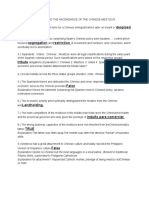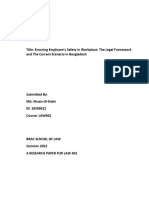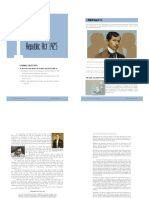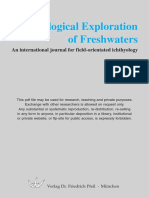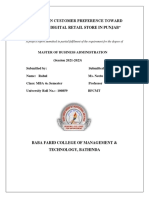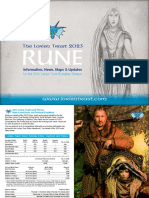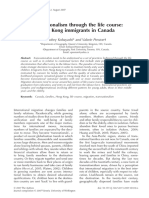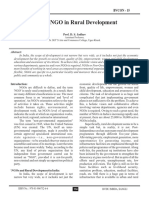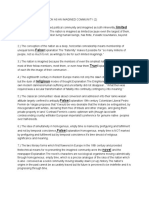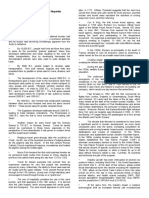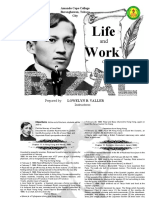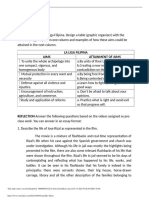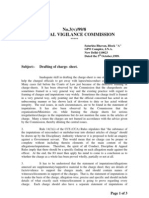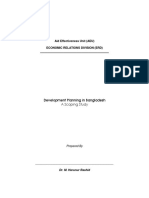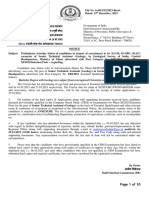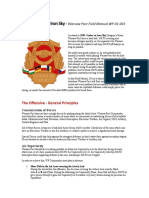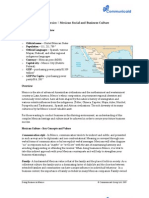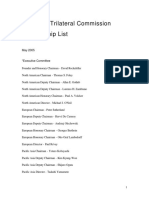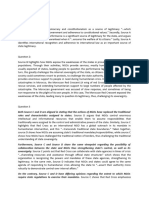ACTIVITY
Constitution of the La Liga Filipina. Design a table (graphic organizer) with the
aims of La Liga Filipina in one column and examples of how these aims could be
attained in the next column.
LA LIGA FILIPINA
AIMS ATTAINMENT OF AIMS
To unite the whole archipelago into a.By unity of their Leaders.
one compact, vigorous, and b.Creating a new reform that without
homogenous body contradiction on their plan.
Mutual protection in every want and a.By being free from colonialism.
necessity b.Being contented on what you have.
Defense against all violence and a.Learn how to fight your rights in a
injustice. good ways
Encouragement of instruction, a. Don’t be afraid to talk about your
agriculture, and commerce. opinions.
Study and application of reforms a. Practice what is right and avoid evil
so that progress will.
REFLECTION Answer the following questions based on the videos assigned as pre-
class work. You can answer in an essay format:
1. Describe the life of Jose Rizal as represented in the film.
The movie is a mixture of flashbacks and real-time representation of
Rizal’s life when his case against the Spanish government and church was
under investigation. Although his life in jail was mostly the highlights being
presented in the film, there are also some relevant flashbacks of his life that
were shown throughout the film. Rizal’s life in jail seemed to be his days of
contemplating and reflecting what has happened to his life, works, and
battles. It can be seen in his flashbacks that his family is indeed in the
principalia; there were servants shown, their big house, horse-drawn
carriage, library and all the other description of the families belonging to
This study source was downloaded by 100000831927433 from CourseHero.com on 11-27-2022 10:12:34 GMT -06:00
https://www.coursehero.com/file/84248941/module-4docx/
� the middle-class of the social and economic hierarchy during the time of the
Spaniards. The joy of his childhood days was also shown in the film, along
with the happy Mercado family that nourished Rizal.
Rizal’s life in the schools that he attended were also shown in the
film, although small important details were omitted to give the general
message and emphasis on Rizal’s “survival” in the educational institutions,
racist Spanish classmates in the Philippines, and Spanish friars who were his
teachers. The instance where he was not immediately accepted in Ateneo
was not included in the movie, so were his literary works and sculpture. The
essence of Rizal exceling in his education and his classmates where the
highlights of his life at school; this was evidently shown during the scene
where he was continuing his studies in ophthalmology in Spain and he was
able to answer all the questions of the professor, verbally and even with the
physical demonstration of the muscles of the eye. His earlier education with
his mother was also show, but the highlight of it was the story of “The Moth
and the Flame”, although it was shown when Rizal was to leave with
Paciano to Clamba, he was persistent to stay under his mother’s tutoring
and teachings. One of the significant scenes shown during his earlier
educations as well was when he was already in Calamba where the
punishments for students were not encouraging them to study harder, but
only imposes fear and culture of silence to the youth. Rizal’s life in abroad
was also shown in the film, although not much of it, just the relevant scenes
to showcase Rizal’s struggle in fighting for the freedom of the Philippines. In
Rizal’s very first travel outside of the country where he was to continue his
study in medicine and conduct his “secret mission”; it was shown in the film
that Rizal opposed the idea but his brother Paciano insisted on it, and in the
end Rizal obeyed.
Rizal’s life abroad, as shown in the film, is something more
revolutionary because his intention was to observe and learn from the
enemy through its origin. The makings of Rizal’s famous novels were
highlighted as they were made in Europe, alongside the struggles in making
This study source was downloaded by 100000831927433 from CourseHero.com on 11-27-2022 10:12:34 GMT -06:00
https://www.coursehero.com/file/84248941/module-4docx/
� his novels and the triumphant feeling after finishing it, the hardships of Rizal
being in a foreign country without financial stability was showcased, his
darkest winter was the confirmation. In abroad Rizal also did not only had
an encounter with the foreign enemies, but also, and most heart-breaking,
with the other Filipinos and elites who Rizal thought to be with him in
fighting for the freedom of the country, but were actually enjoying the
privilege of having to be in Spain.
2. What is your assessment about the film’s representation of Jose Rizal?
I want to say the film’s representation of Rizal was justified and
acceptable. Books and films are both different kinds of arts and mediums of
information that seek to deliver messages in their own creative ways. Books
were expected to provide almost all the data of events or happenings in
history in text form; films, on the other hand and as I would like to say
specially the films about history, are made for the purpose of a less boring
distribution or discussion of history, merely for entertainment purpose. The
contents of books and films will always differ even if the film is based on a
literary work or a life event because there is the entertainment function of
films that would override the real and true happenings to add drama or
anything for the entertainment factor. Nevertheless, the film about Jose
Rizal had his representations justified, although not everything, but those
that were given emphasis were reasonable.
In all of the readings for the class and in the class discussions, Rizal is
always and, if no one would oppose or petition in the future, will always be
the Philippine national hero. Although selected by the Americans in
majority, the majority of Filipinos also agreed on Rizal being the national
hero, as the other candidates, even in the absence or presence of Bonifacio,
were all inferior in terms of education and nationalistic writings. As
represented in the movie, Rizal was also the very inspiration of Bonifacio;
evident from the scene where Rizal was giving a speech about his
This study source was downloaded by 100000831927433 from CourseHero.com on 11-27-2022 10:12:34 GMT -06:00
https://www.coursehero.com/file/84248941/module-4docx/
� homecoming despite the threats for his life, Rizal announced that his
enemies are not abroad but in the Philippines, he then added ideas,
information and encouragements on how to free the country and the
people from the abusive maltreatments of Spain. Bonifcaio, enthusiastically
listening and, as shown in the movie, the only one hopefully and devotedly
responding to Rizal portrayed the image or idea that Jose Rizal indeed was
the eye opener for Bonifacio to start the Katipunan and influence and wake
up the Filipino masses, which comprise of the poor and weak individuals, to
revolt violently, physically, till death. Hence the film’s representation of Rizal
as a national hero was not only justified but proven, for his influence,
according to the film, is what sparked the Father of the Katipunan to
establish the Kataas-taasang, Kagalang-galangang Katipunan ng mga Anak
ng Bayan.
Aside from being the national hero, I think the film also made a
representation of Rizal with respect to his professions and specialties. In the
field of medicine, we saw how dedicated Rizal was in helping the Filipinos
by establishing a clinic despite his exile in Dapitan; his specialty in
ophthalmology was also showcased in a scene where he was about to
operate his mother’s eyes, she was originally the reason why Rizal took up
ophthalmology. There are lots of Rizal’s profession, but him being a writer
was given the most highlight because if not for his skills in writing, he would
have fought the enemies in a different battle, we all know that Rizal took it
to his novels his anger and cries justice with the abusive Spanish
government that reigned the Philippines in his times. The film showed
Rizal’s struggles in pursuing his novels like the financial instability, being far
from home, the prohibition of his books with a joined punishment for those
who were caught in possession of it, and mixed emotions, sometimes
blaming his works, because of the bad news he received from home.
Despite all the disturbances, he still managed to turn his fears, worries, and
pain into the fuel that resulted in him finishing his novels.
3. What is the main question that the film seeks to answer?
This study source was downloaded by 100000831927433 from CourseHero.com on 11-27-2022 10:12:34 GMT -06:00
https://www.coursehero.com/file/84248941/module-4docx/
� The film is about Jose Rizal, which is obvious with the title. In the
movie, we saw his fights and struggles, which were all stressed throughout
the film. Now to the request, what is the main question that the film seeks
to answer? I am considering a lot, actually, but I wouldn’t like to consider
the information given or provided by the film as the film makers might have
altered the real information to make the film more interesting. Before I
draw in to conclusion the ‘main’ question, I would like to share my
sentiments with the other question that I have pondered on.
These questions formulated in my mind were all based on the film’s
delivery of the events that happened in history, if ever the events were
given or deducted details, I am not aware so please pardon my arrogance.
The questions that the film seeks to answer, that I have contemplated on
are as follows: 1) how or what is the life of the Filipinos and the state of the
Philippines during the reign of the Spaniards? 2) What were the challenges
that Rizal had to face in his fight with the Spaniards for the freedom of the
Philippines? And last but not the least 3) what made Rizal the national
hero?
The first 2 questions were already discussed in class so these
questions were just like clarifications that the film had put into action in a
more dramatized way that a reader can imagine. We have discussed the life
of Filipinos in the earlier part of the semester, and during the group reports
the second question was or has already been answered. These two
questions were just formulated in my mind, although already answered
because in my opinion, these questions would be relevant to people who
will receive information about the Spanish regime and about Jose Rizal first-
hand from the film. The nature of the two questions was based on how the
film made significant attention on the manipulation and mishandling of the
Spanish government to the Philippines. I have also considered the highlights
of Rizal’s novels being merged with the realities and flashbacks of the film
This study source was downloaded by 100000831927433 from CourseHero.com on 11-27-2022 10:12:34 GMT -06:00
https://www.coursehero.com/file/84248941/module-4docx/
� wherein it was all similar with the reality on Rizal’s life; the violent and evil
regime of the Spaniards.
The last question is the one that I would like to consider as my
answer, what made Rizal the national hero? In the first discussions about
Rizal in line to the lesson about the selection of the national hero, we were
given comparison of Bonifacio and Rizal, and then a question after that
which, if I can remember clearly, goes something like this “who do you
prefer to be the national hero, Rizal or Bonifacio?” My answer remains the
same, I do not and I will not choose for them both fought and died for the
same purpose, as how the other unnamed Katipuneros and General
Antonio Luna have offered their life for the liberty of the country. However,
with the magic of the film industry, I was able to see how Rizal emerged to
be the national hero that the Filipinos acknowledge; it was because of his
novels and his genius. Rizal’s way of fighting the Spaniards through
educating the Filipino people is something that is game-changing; although
he was knowledgeable that majority of the Filipinos belong to the lowest
class and they are not and will not be given proper and correct education,
those who were fortunate like Rizal were blinded by the safety that they
enjoy, thus having to leave the knowledge of revolt to the poor Filipino
masses and interpreting it a s a bloody revolution.
4. Identify leadership traits portrayed by Rizal?
When Rizal traveled to Spain to complete his medical studies in 1882, he
knew exactly how to form strong alliances with fellow Filipino students to
promote his ideas for reforms in his home country. Rizal was skillful, even as
a young man at 21 years old, in influencing and building mutually beneficial
collaborations with people who are even older than him to unite and
achieve a common strategic goal.
This study source was downloaded by 100000831927433 from CourseHero.com on 11-27-2022 10:12:34 GMT -06:00
https://www.coursehero.com/file/84248941/module-4docx/
� The admiration and trust Rizal gained from his colleagues led to his being
named the honorary president of La Solidaridad, which launched the
propaganda movement in Spain. Through his leadership, La Solidaridad
flourished with a growing number of supporters not only in the Philippines
but in other countries as well.
The active participation of Rizal gave rise to future leaders from the
organization such as Marcelo H. Del Pilar, Mariano Ponce, Antonio Luna,
and Graciano Lopez Jaena. When Rizal returned to the Philippines in 1892,
he also founded a similar organization called La Liga Filipina, which was
inagurated along with members mostly based in Manila.
5. What are the effects of the execution of Dr. Jose Rizal?
Jose Rizal's death has had a huge impact, many have suffered, are
saddened, regretted and to this day the loss of Jose Rizal is still
unacceptable.
Only one live bullet was put into the rifles; the rest contained blanks. They
knew of his innocence, and meant to assuage any guilt. His execution photo
includes the dog which was the firing squad’s mascot. After he was shot,
the dog is said to have run whining around the corpse as a soldier fired a
final shot into Rizal’s head to ensure he was dead.
The Spanish authorities buried him in an unmarked grave and the papers
Rizal had hidden about his person disintegrated. His sister Narcisi found a
guarded graveyard with a freshly dug grave which she knew must be his,
and marked the grave RPJ, her brother’s initials in reverse.
A section of vertebrae which was damaged by a bullet was retained by
Rizal’s family and is now on display in the Rizal Shrine in Fort Santiago,
Manilla.
This study source was downloaded by 100000831927433 from CourseHero.com on 11-27-2022 10:12:34 GMT -06:00
https://www.coursehero.com/file/84248941/module-4docx/
� His last words echoed those of Christ: “Consummatum est”. “It is finished.”
Rizal was less a revolutionary than a writer who challenged the colonial
status quo. Although his death was ultimately attributed to his writing, his
dissenting works did have the effect of destroying Spain’s hold over the
Philippines. Two years after his death Spain lost control of the Philippines,
but it wasn’t until 1946 that independence was granted. But despite this,
there was a big difference between the world then and the world now. The
death of Riza has been a great lesson because of her actions. We all now
enjoy freedom, so she deserves to be called a woman.
This study source was downloaded by 100000831927433 from CourseHero.com on 11-27-2022 10:12:34 GMT -06:00
https://www.coursehero.com/file/84248941/module-4docx/
Powered by TCPDF (www.tcpdf.org)



